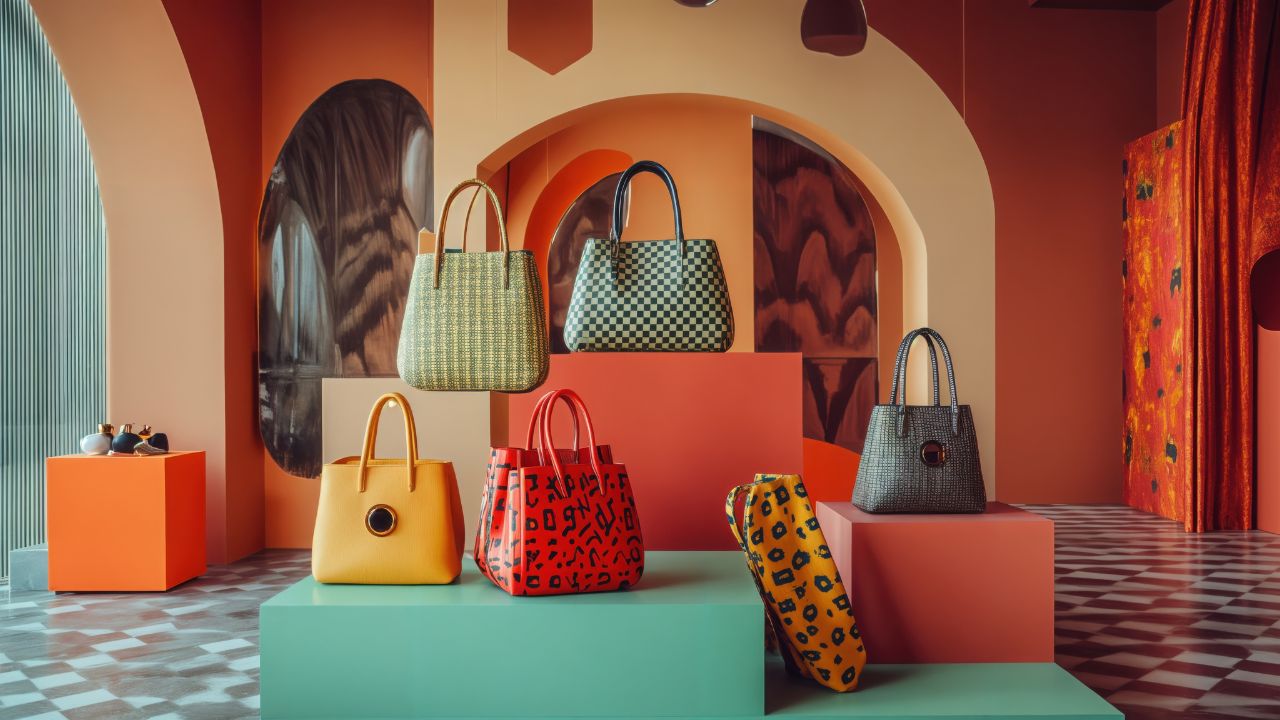Your products might be top-notch, but without the right presentation, customers could easily overlook them. The way you organize and showcase your items directly affects sales. These retail display tips act like a silent salesperson, guiding shoppers through your store, telling your brand’s story, and inspiring them to buy.
Mastering the art of presentation doesn’t require a massive budget. It requires a smart strategy. These ten retail display tips are designed to help you create an engaging retail environment, capture your customers’ attention, and increase sales almost immediately. Let’s transform your space into a sales-driving machine.
1. Craft a Story with Your Window Display
Your window display is the first thing shoppers notice; it’s your handshake, your introduction, and your invitation to explore. A dull setup is a missed chance to connect. One of the best retail display tips is to create a window that tells a story and speaks directly to your target customers, inspiring them to step inside.
Think about what you want people to feel. Are you selling adventure, comfort, luxury, or fun? Use props, colors, and product arrangements to convey that emotion. For example, a display for outdoor gear could feature a faux campfire and camp chairs, while a display for summer dresses might use bright, sunny colors and beach-themed props. The goal is to create an eye-catching scene that makes people stop, look, and want to step inside.
2. Create a Clear Focal Point
When a customer walks into your store, their eyes need a focal point. Without a clear focal point, the space can feel cluttered and overwhelming, causing them to disengage. A focal point is a central area of interest that immediately captures your customers’ attention and sets the tone for their journey through your store.
You can create a focal point using several techniques:
- A large, striking display table right at the entrance.
- A brightly lit wall featuring your newest or most popular items.
- An artistic installation or a unique piece of furniture that reflects your brand’s personality.
This central point should highlight products you want to move quickly or showcase a specific theme. It acts as an anchor for your entire store layout and begins the process of guiding customers on their shopping path.
3. Leverage the Power of Threes
The “Rule of Three” is a powerful principle in design and marketing. It suggests that items arranged in odd numbers, particularly in groups of three, are more visually appealing and memorable than items in even-numbered groups. Our brains find asymmetry more interesting, and a trio of objects creates a sense of balance and completeness.
Apply this simple but effective visual merchandising tip to your displays. Instead of placing two or four items together, group products in threes. You can vary the height and size of the items within the group to create visual interest and a more dynamic arrangement. This technique works wonders on shelves, tables, and even in your window display.
4. Use Lighting to Highlight Products
Lighting is a critical element of visual merchandising that is often overlooked. The right lighting does more than just illuminate your store; it creates a mood, directs focus, and showcases your products at their best. A poorly lit store can make even the most premium products appear dull and uninviting.
Use a combination of lighting types to enhance the shopping experience:
- Ambient Lighting: The overall lighting of your store. It should be bright and welcoming.
- Task Lighting: Focused light for areas like cash wraps and fitting rooms.
- Accent Lighting: This is where the magic happens. Use spotlights to highlight products on shelves, mannequins, or special displays. This technique draws the eye exactly where you want it to go.
Experiment with different light temperatures and angles to see what makes your merchandise pop. Good lighting can transform a standard retail environment into a gallery-like space that elevates your products.
5. Design a Smart Store Layout
Your store layout and floor plan are the foundation of your customer’s journey. A well-designed layout can guide customers seamlessly from one section to another, exposing them to the maximum amount of merchandise and encouraging discovery. The goal is to create a natural flow that feels intuitive, not forced.
Consider a circular path that leads shoppers from the front of the store to the back and around again. This ensures they see everything you have to offer. Keep your main pathways wide and clear of obstructions to avoid congestion. Use displays, shelving, and even floor decals to subtly guide customers along your desired route. A logical store layout prevents confusion and helps increase sales by making the shopping process easy and enjoyable.
6. Group Products to Encourage More Sales
Strategic product grouping is one of the most effective retail display tips for increasing the average transaction value. Instead of organizing items solely by category (e.g., all shirts in one place), create displays that showcase complete looks or solutions. This is called cross-merchandising.
If you sell apparel, display an entire outfit on a mannequin: the shirt, pants, scarf, and handbag. If you sell kitchenware, create a display with a pasta maker, gourmet pasta, a jar of sauce, and a recipe book. By showing how different products can be used together, you plant a seed in the customer’s mind. You’re not just selling items; you’re selling a lifestyle or an idea, which can encourage customers to purchase multiple products instead of just one.
7. Keep Signage Clear and Easy to Read
Signage is your in-store communication tool. It can inform customers about promotions, share product benefits, and state prices. However, if your signs are cluttered, hard to read, or inconsistent, they create confusion instead of clarity.
Follow these simple rules for effective signage:
- Be Concise: Use as few words as possible to get your message across.
- Use Legible Fonts: Choose fonts that are clean and easy to read from a distance.
- Maintain Brand Consistency: Your signs should use the same colors, fonts, and tone of voice as the rest of your brand materials.
- Position Strategically: Place signs at eye level where they are most likely to be seen.
Clear signage helps enhance the shopping experience by providing customers with the information they need, right when they need it.
8. Appeal to Multiple Senses
While visual merchandising is key, the most immersive retail environments appeal to more than just the sense of sight. A multisensory experience can create a stronger emotional connection with your brand and make your store more memorable.
- Scent: Use a subtle, signature scent that aligns with your brand. A bakery might use the smell of fresh bread, while a spa-like boutique could use lavender.
- Sound: Play a curated music playlist that matches your brand’s vibe and your target customer’s tastes. The volume should be just right, creating a pleasant background ambiance.
- Touch: Encourage customers to interact with products. Use textures in your displays, like wooden crates, velvet drapes, or metal surfaces, to create a tactile experience.
Engaging multiple senses makes shopping less of a transaction and more of an experience.
9. Keep Displays Fresh and Rotate Stock
The saying “out of sight, out of mind” is very true in retail. Displays that remain the same for months become part of the background, and regular customers will stop noticing them. To maintain interest and create a sense of urgency, it is crucial to change your displays and rotate your merchandise regularly.
Aim to update your main displays, especially the window display and focal point, every two to four weeks. This gives returning customers a reason to see what’s new and can help you move slower-selling inventory by giving it a fresh context. This doesn’t mean a complete overhaul every time. Sometimes, simply rearranging products or changing the color scheme is enough to create a fresh look and recapture your customers’ attention.
10. Place Key Items at Eye Level
The most valuable real estate in your store is the space between a customer’s waist and their eyes. Products placed at eye level are far more likely to be seen and purchased. This is a fundamental visual merchandising tip used by a wide variety of successful retailers.
Use this prime space to highlight your high-margin products, bestsellers, or new arrivals. Less popular or basic items can be placed on lower or higher shelves. This simple act of strategic placement ensures that your most important products get the attention they deserve, directly contributing to your efforts to increase sales.
FAQ: What is the Most Important Element of Visual Merchandising?
While all elements are interconnected, the most important element of visual merchandising is creating a focal point. A strong focal point immediately captures a customer’s attention, communicates your brand’s story, and sets the tone for the entire shopping experience. It’s the starting block that guides the customer’s journey through your store.
Implementing these retail display tips can have a significant and immediate impact on your business. By thoughtfully designing your space, you create a more engaging, enjoyable, and profitable retail environment.
Are you ready to turn your marketing efforts into measurable results? At Marketing Immersion, we specialize in creating comprehensive strategies that connect with your audience and drive growth. Visit us to learn how we can help you build a stronger brand and boost your sales.






